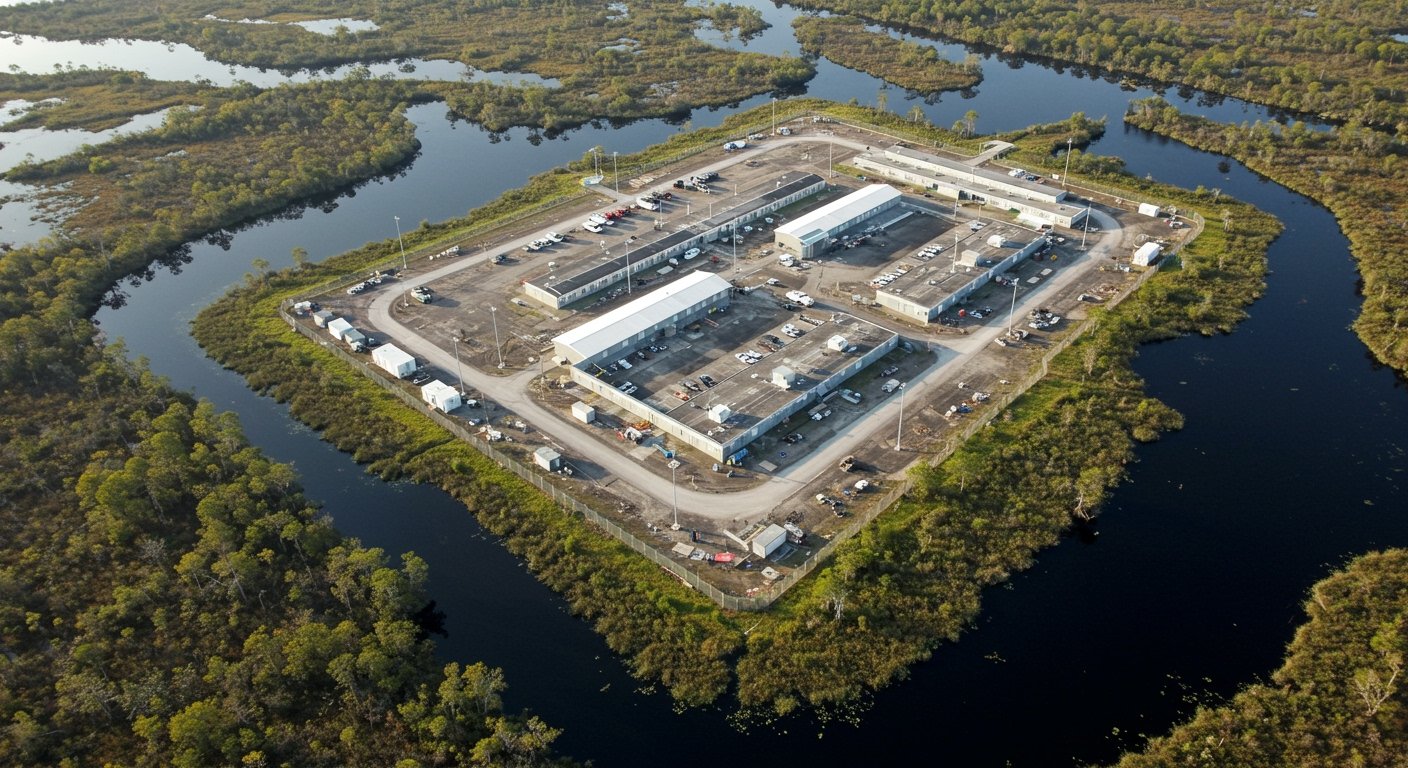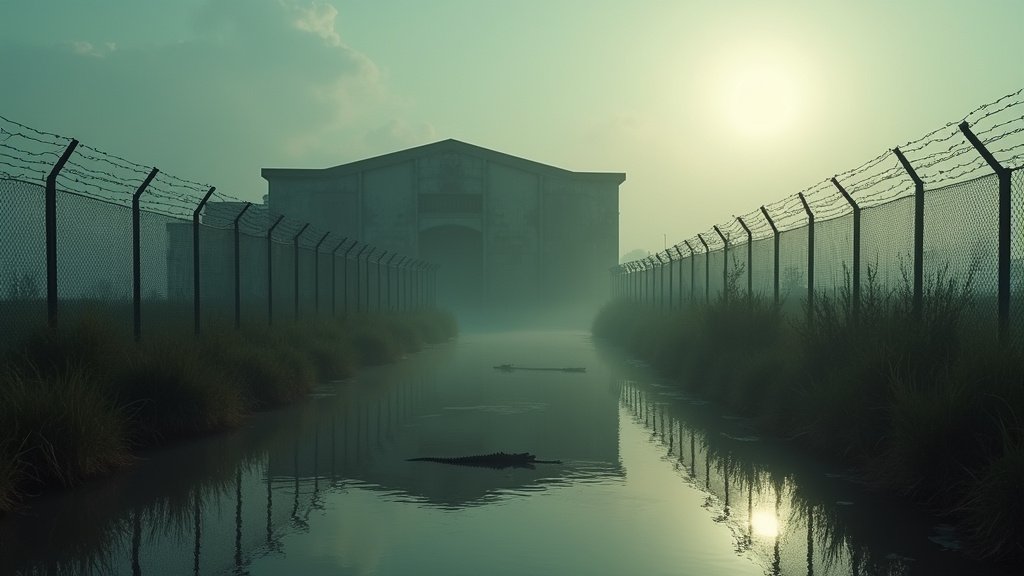OCHOOPEE, Fla. — Florida Governor Ron DeSantis has leveraged sweeping emergency powers, initially invoked in response to migrant arrivals and subsequently extended, to facilitate the rapid construction of a large-scale immigration detention facility deep within the Everglades. The controversial project, quickly nicknamed “Alligator Alcatraz,” is being erected on an airfield owned by Miami-Dade County situated off Tamiami Trail in Ochopee, Florida.
Development of the center has proceeded at an extraordinary pace, reportedly taking approximately a week from commencement to significant operational readiness. This speed is a direct result of the administration’s deployment of emergency authorities, bypassing standard regulatory and procurement processes often required for such substantial infrastructure projects.
Emergency Powers Underpinning Rapid Construction
The emergency powers utilized by the governor were first declared in January 2023. The initial declaration was made in direct response to a surge in migrant arrivals from Cuba and Haiti to Florida’s shores. Since that time, these emergency powers have been repeatedly extended, creating a legal framework that the DeSantis administration has now applied to accelerate the development of the detention facility.
Officials argue that the emergency declaration provides the necessary flexibility and urgency to address evolving situations, including those related to immigration enforcement and processing. The application of these powers to construct physical infrastructure at this speed marks a significant expansion of their use compared to typical disaster response scenarios.
Swift Development and Operational Scope
The construction effort involves a collaboration between private companies and the Florida National Guard troops. This joint deployment of civilian contractors and military personnel underscores the state’s commitment to completing the project quickly. The site, chosen for its location on Miami-Dade County property, aims to provide a centralized point for processing and holding detained immigrants.
The facility is designed with a substantial capacity, intended to hold up to 3,000 detained immigrants. This capacity suggests the state anticipates a significant need for such a center, reflecting the ongoing complexities surrounding immigration flows and enforcement at the state level. The remote location within the Everglades adds a layer of logistical challenge but also potential isolation for those held there.
Questions and Criticisms Arise
The speed of construction and, more significantly, the use of emergency authority to enable it have drawn sharp criticism from various groups. Environmentalists have voiced concerns, raising questions about the potential impact of rapid construction in the sensitive Everglades ecosystem, although the core of their questioning, as reported, centers on the speed and the authority used rather than detailed environmental assessments not having taken place.
Elected officials have also publicly questioned the governor’s actions. Among them is Boca Raton Democrat Senator Lori Berman, who has raised objections regarding the justification and scope of using emergency powers for building a facility of this nature. Critics argue that while emergency powers are crucial for immediate crisis response, their extended use for planned infrastructure development warrants greater scrutiny and adherence to standard procedures.
Governor DeSantis Defends the Approach
Governor DeSantis has defended the state’s approach, drawing parallels between the logistics required for this rapid construction and past emergency responses. He specifically compared the effort to the challenges involved in rapidly reconstructing a hurricane-damaged bridge. This comparison aims to frame the detention center project as an urgent logistical undertaking akin to disaster recovery, thereby justifying the use of emergency powers and expedited processes.
The administration maintains that the facility is necessary to manage immigration challenges facing the state effectively and that the emergency powers provide the most efficient means to achieve this goal. They emphasize the state’s right to take proactive measures in response to perceived federal inaction or challenges related to border security and immigration enforcement.
Broader Implications
The construction of the “Alligator Alcatraz” facility highlights the increasing role of state governments in immigration matters, traditionally managed at the federal level. It also raises important questions about the appropriate scope and duration of emergency powers, particularly when used for projects extending beyond immediate, short-term crisis management.
The development serves as a tangible symbol of Florida’s assertive stance on immigration and the governor’s willingness to employ extraordinary measures to implement his administration’s policies rapidly. As the facility becomes operational, its management, conditions, and the legal basis for detentions within it are likely to remain subjects of intense public and political debate.





